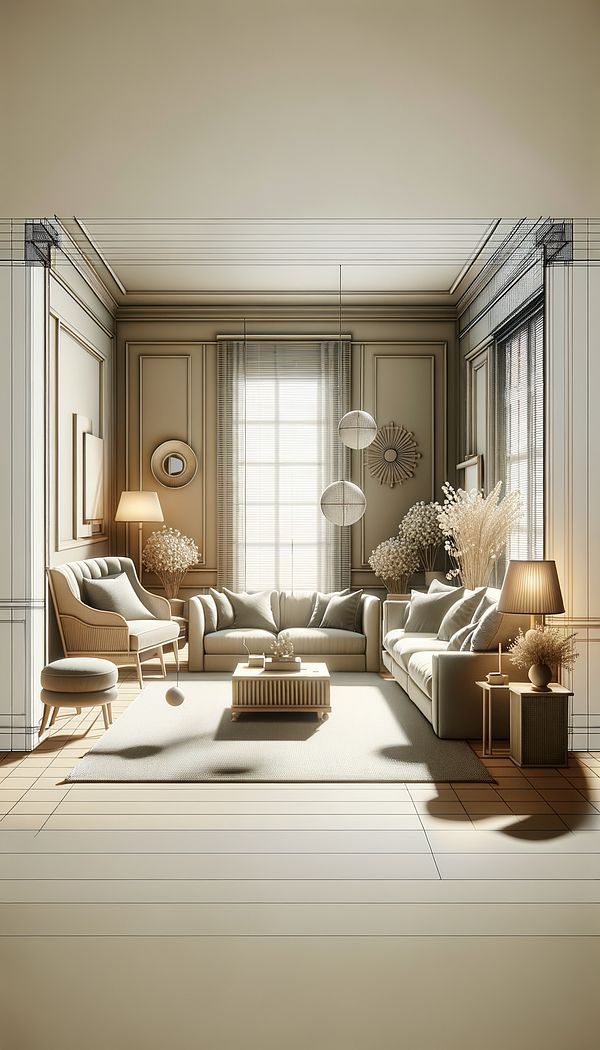What is Unity?
Unity in interior design refers to the harmonious arrangement of elements within a space that creates a cohesive and coherent look.
Description
In the realm of interior design, unity is a core concept that underpins the harmony of a space. It is achieved when all the components of a room - including colors, textures, materials, furniture, and decorative objects - complement each other to form a consistent and pleasing whole. Unity doesn't mean everything must match perfectly; instead, it's about achieving a balanced, cohesive look that feels intentionally designed.
One way to achieve unity is through repetition, such as using a consistent color palette throughout the space or repeating geometric shapes. Contrast can also be used effectively by pairing different elements in a way that highlights their similarities and differences, thereby strengthening the overall cohesive aesthetic. The goal is to create visual connections between separate elements to ensure they contribute to a unified theme or mood.
Unity is crucial for creating a space that feels both welcoming and aesthetically pleasing. It allows for a flow that guides the eye smoothly from one area to another, making the space feel connected and intentional. Without unity, a space can appear disjointed, chaotic, and uncomfortable. By carefully considering how each element interrelates, designers can create environments that are not only beautiful but also functional and harmonious.
Usage
For instance, in a Scandinavian-inspired living room, unity might be achieved through the use of a light, neutral color palette complemented by natural wood finishes and simple, clean-lined furniture. Or, in a more eclectic setting, unity could be maintained by choosing diverse furniture pieces and accessories that share a common color or texture, threading them together into a cohesive design narrative.
FAQs
-
Is unity the same as uniformity in interior design?
No, unity is about creating a cohesive look through complementary elements, while uniformity suggests making everything look the same. Unity allows for diversity within a harmonious design.
-
Can you achieve unity with contrasting elements?
Yes, contrasting elements can be unified by their relationship to the space or to each other, through aspects like color, shape, or texture. Properly managed contrast can enhance the cohesive quality of a room.
-
How important is unity in a multi-functional space?
In a multi-functional space, unity is vital to ensure all areas blend seamlessly while fulfilling different purposes. This requires thoughtful design to maintain a consistent aesthetic across diverse functional zones.
Practical Application
To apply unity in your design, start by defining a clear theme or mood for the space. Select a color palette and stick to it throughout, using variations in shade and tone to add depth while maintaining cohesion. Consider the visual connections between items, ensuring that each piece contributes to the overall harmony of the room. Don't be afraid to use patterns, textures, and materials to add interest and variety, but balance them within the context of the unified design theme.
-
Furniture Types599 articles
-
Decorative Objects240 articles
-
Decorating Principles & Elements330 articles
-
Materials & Textiles360 articles
-
Color & Patterns154 articles
-
TV StandA piece of furniture designed to support a television and related media equipment.
-
AmoriniAmorini are decorative motifs featuring cherubic children, often depicted with wings.
-
RailroadedRailroaded refers to a method of fabric construction oriented horizontally rather than the traditional vertical orientation.
-
GuillocheGuilloche is a decorative technique involving intricate, interlacing patterns.
-
SelvageSelvage refers to the tightly woven edge that runs along each side of a piece of fabric.
